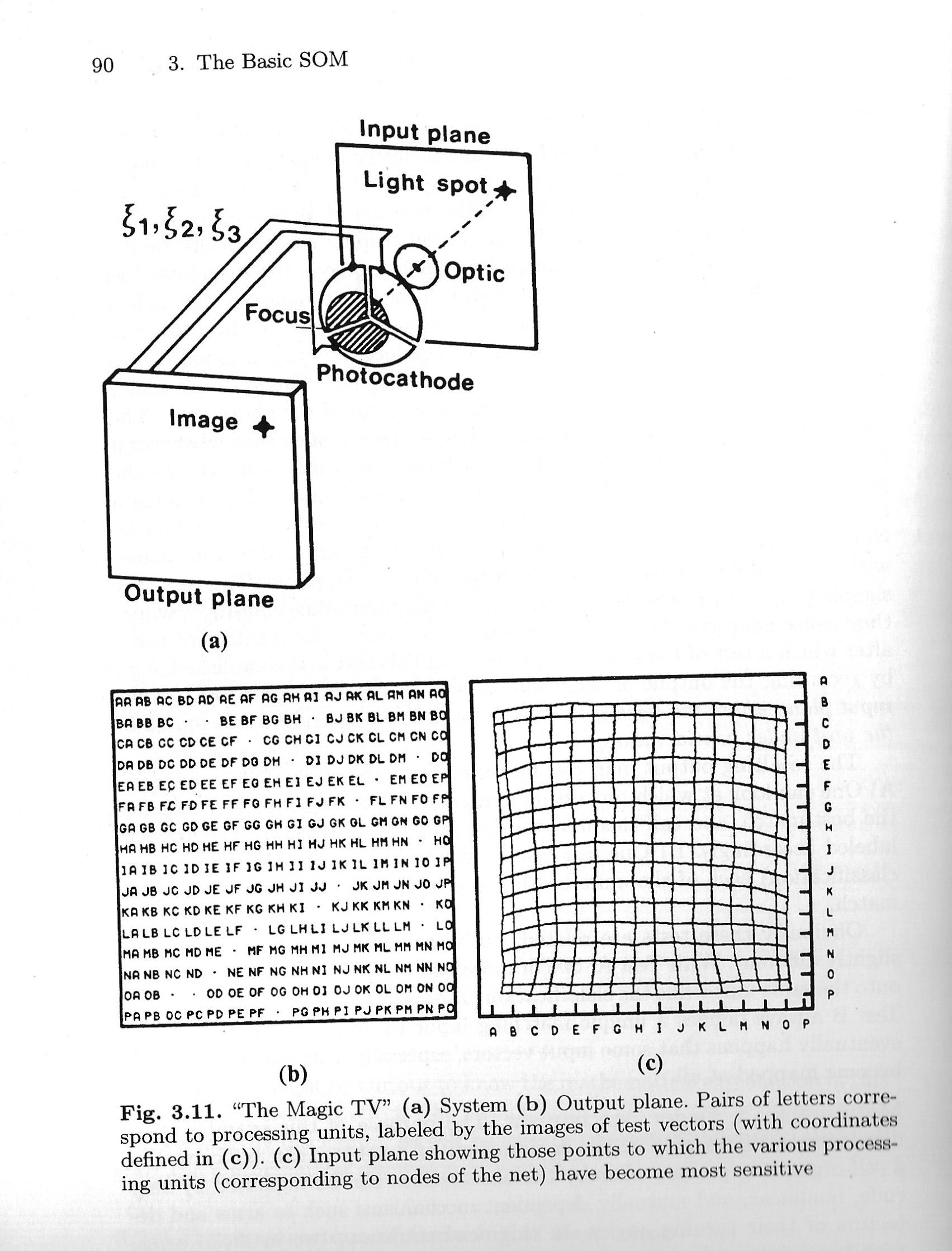The camera is thought to have a very poor optical system, such that whenever a spot of light appears on the input plane, it forms a very diffuse Focus onto the photocathode.
Assume that the cathode has three sectors, each producing a signal directly proportional to the area that is illuminated by the broad focus. Now let the light spot move at random in different points in the input plane, with a probability density that is uniform over a square area. The resulting signals 𝜉_1, 𝜉_2, and 𝜉_3 are then transmitted to the processing-unit array, where they cause adaptive changes.
Fig. 3.11. “The Magic TV” (a) System (b) Output Plane. Pairs of letters correspond to processing units, labeled by the images of test vectors (with coordinates defined in (c)). (c) Input Plane showing those points to which the various processing units (corresponding to nodes of the net) have become most sensitive

~
KOHONEN, Teuvo, 1995. Self-organizing maps. Berlin ; New York: Springer. Springer series in information sciences, 30. ISBN 978-3-540-58600-5, p. 90
~
photocathode | ˌfəʊtə(ʊ)ˈkaθəʊd | noun a cathode which emits electrons [⇒ Fermions] when illuminated, causing an electric current.
Fermions are extreme individuals. No matter how hard you try, you will not get two of them to do the same thing in the same place—there must always be a Difference between them.